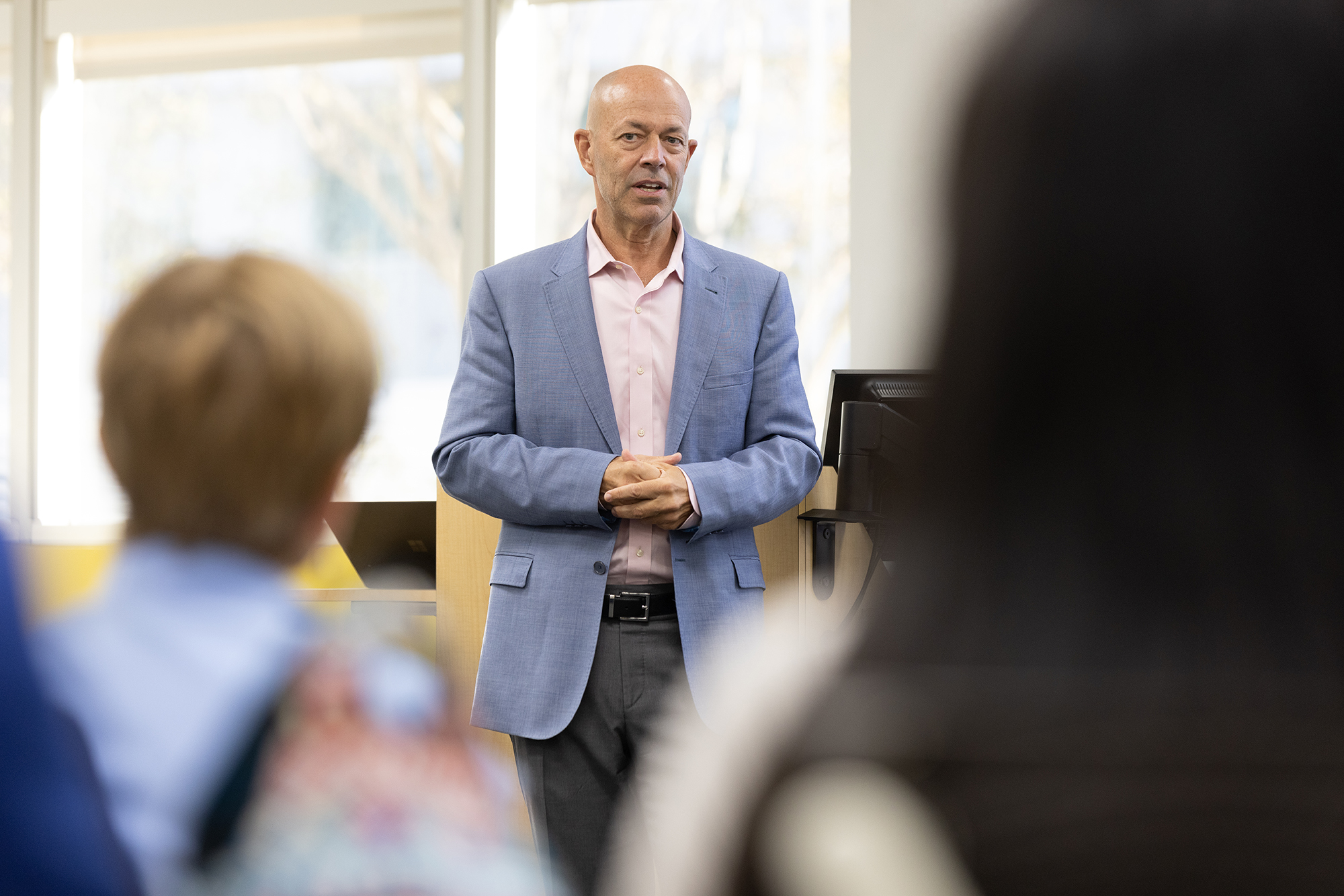10.03.2022
By uscbknpt
USC hosts APTA President Roger Herr

Herr toured USC’s athletic, dance and student health facilities on the University Park Campus before taking part in a freewheeling conversation with Division faculty, staff and students.
BY JOHN HOBBS MA ’14
PRESIDENT OF THE AMERICAN PHYSICAL THERAPY ASSOCIATION ROGER HERR visited the USC Division of Biokinesiology and Physical Therapy in mid-September in what was one of his first such in-person trips since he was elected in 2021.
As part of his visit, Herr toured USC Athletics’ training facilities at the Galen Center, the physical therapy clinic at the USC Glorya Kaufman School of Dance, the USC Athletics’ training facilities at the John McKay Center and Engemann Student Health Center. Afterward, Herr took part in a freewheeling discussion with Division community members who posed questions covering the physical therapy profession’s clinical landscape, reimbursement, research, education and image.
On where clinical practice is going:
“I grew up in a world where I was educated in a traditional intervention environment. I think it’s awesome what I saw today, and we need to do more of that. … What you’re doing in primary care, you’re constantly collaborating, and that’s essential.”
On getting paid for wellness care:
“Don’t go to Medicare and say ‘Pay me for wellness’ because they’re not going to understand that. We need to do that with other payers, like working with employer-based models (e.g. Starbucks, Boeing, Nike) … payers who want to keep their workforce healthy. There are PTs doing that with a lot of HR benefits now offering support. So there are some ways to do it. You’re going to be doing it differently. You’re going to get paid differently, but do it. We need to do it.”
On how to address stagnating or even declining reimbursements:
“Medicare is usually a precedent for what most other insurances do. If you’re going to do something new, you don’t go to Medicare first. Trying to partner with regional payers or employer-based payers is the first step in that I think people are going to see the value of it. When I worked in the Northwest, they had the State Alliance, where all the major employers — Starbucks, Microsoft, Boeing, Amazon — got together with providers and insurance companies, and they steered the ship because they were paying the insurance companies. They partnered with us as providers, so we need to work to change payment. That’s where we had more advocacy versus just pay us more. The other part is other professions advocating for us. You’re seeing that in the primary care practice models. You need to be part of this.”
On research:
“Research is essential to our future. It’s been essential to how we got where are now, and it needs to continue to be. I think the interdisciplinary research — the researchers that partner with clinicians — is effective because clinicians have really good ideas, but they don’t know how to validate it and support it. There are some people doing some really innovative things [to integrate practice and research].”
On education:
“What was great about the last 10 years is education has really embraced that clinical education is not separate. It is part of education. You are in a classroom and then you go into clinics. Really being part of that continuum and providing that throughout your educational experience, not just at the end so you can begin to integrate it.”
Advice to DPT students:
“Life-long learning! Practice is so much more than a degree. What are you doing to keep up with practice? Seize new opportunities where they come. I know people today want different things in their career and some do a side hustle or job because they have interest in other parts of the profession. Some of us do that through volunteer activities — that’s why I’m president — others do it through consulting or taking two nights a week to get exposed to different populations than we work with during our day. You’re an amazing community here in that you can do that across your community and your faculty practice opportunities. That’s something that is unparalleled; that’s amazing. ”
EDITOR’S NOTE: QUOTES HAVE BEEN LIGHTLY EDITED FOR BREVITY AND CLARITY.

